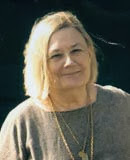About Me

- Anita Burgh
- I am a writer - late developer since I wasn't published until I was 50. I have now written 23 novels, numerous short stories and articles.
Followers
Blog Archive
My Blog List
Powered by Blogger.
Slideshow
Sunday, 19 July 2009
An interesting question popped up this week on my AB Group. Can one have too much pace in a novel, a couple asked? Since, in commercial fiction, pace and page turn-ability are so closely linked, it made me stop and think.
Without pace then a book can soon become dull and one stops reading it. Too much pace and credibility is lost.
To my mind, How To books can be dangerous, especially when you register how much they recommend the use of hooks – for hooks, they say, create pace and encourage you to read on . . . Or do they?
“You need a hook with the first sentence – hooking the reader into the story.”
“Hooks are essential in the middle of a chapter.”
“You MUST end each chapter on a hook.”
Why?
I can see it being necessary for a thriller – leaving the reader guessing and panting for more. But then most thrillers are comparatively short and a reader can take the pounding. Barbara Cartland wrote short books, short chapters and short paragraphs to give her books pace and they most certainly have it. One can read them in one sitting, but it is the shortness that permits her to do this. I call hers boom-boom pace. For a book of say 130,000 words that amount would exhaust the reader.
Pace to me should be varied. Of course there are times when a story calls for it but it is too easy to sacrifice scene setting and descriptive passages because a writer is obsessed with pace and is afraid she will slow it down - then the book suffers with their exclusion. Be warned though, too much descriptive writing can kill pace and the book will suffer from that - what a confusing topic writing is!
So, what tools do we have to add it. Life is a mixture of quiet times and troubled times, such contrasts give us pace. One action leading to another.
A surprise in your plot one that shakes the reader. And crisp writing with unnecessary words pruded ruthlessly. And don’t forget how dialogue speeds a book along.
But the best instrument for creating pace that you have is a good strong plot with well thought out characters which will keep your reader bowling along.
Above all the reader should be unaware of what you are doing
Having said all of this what conclusion have I reached? That it depends on the genre how much you allow. That a good story will create its own pace. That nothing in wiritng is simple. That the How to books have a point, but then so do I!
Final conclusion. Listen to your inner voice, it will tell you what to put in and what to leave out. This is how I see it, others might think differently.
Subscribe to:
Post Comments
(Atom)






Thanks for this - comes at the perfect time as I revise!
ReplyDeletelx
As I revise, I print out the entire manuscript, make a coffee and sit in a comfy chair, just as I would with a "proper" book. It's so much easier then to judge pace as a reader rather than a writer. Instead of making corrections then, I make notes in the margin like "reduce", "speed up" or "add in" so when I rewrite, I can tell what needs doing.
ReplyDeleteIt's impossible for me to assess my writing on the screen and I have to sit down and "read" instead of editing on the computer.
Really thoughtful post. Thanks
Laura Essendine
www.accidentalguru.blogspot.com
Words of wisdom from a real professional. Such sense.
ReplyDeleteIt’s reassuring to know the wisdom of what might work, what doesn’t, and why that might be so. Thank you, Annie.
ReplyDelete